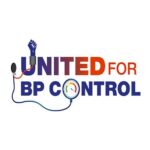New Delhi, July 09,2018 : Representational Image
Acquiring infections in health care settings are inevitable and needs to be part of routine consent. If not done every infection can end up with a media trial.
All patients and their relatives must know that every admission will end up with up to 10% risk of acquiring a new infection.
A hospital-acquired infection (HAI), or nosocomial infection is an infection, which usually occurs 48 hours after admission. They are not related to the original condition and are neither present nor incubating at the time of admission. HAIs are also sometimes called health care–associated infections (HCAIs) to include both hospital and nonhospital settings. HCAIs occur during the process of care in a hospital or other health care facility.
They can occur in any type of setting where they receive care, even after discharge. The most common nosocomial infections include surgical wound infections, respiratory infections, genitourinary infections and gastrointestinal infections.
The most widely accepted definition of HCAIs was given by Friedman et al (BMC Med. 2014;12:40), who defined it as an infection present at hospital admission or within 48 hours of admission in patients that fulfilled any of the following criteria:
- Received IV treatment at home, wound care or specialized nursing care through a healthcare agency, family or friends; or had self-administered IV medical therapy in the 30 days before the infection
- Attended a hospital or hemodialysis clinic or received IV chemotherapy in the previous 30 days
- Hospitalized in an acute care hospital for 2 or more days in the previous 90 days, or
- Resided in a nursing home or long-term care facility.
As per WHO, of every 100 hospitalized patients at any given time, 7 in developed and 10 in developing countries will acquire at least one health care-associated infection.
The endemic burden of health care-associated infection is also significantly higher in low- and middle-income than in high-income countries. More than 20% of all nosocomial infections are associated with ICU stay. In low- and middle-income countries the frequency of ICU-acquired infection is at least 2-3 fold higher than in high-income countries; device-associated infection densities are up to 13 times higher than in the USA.
Prolonged and inappropriate use of invasive devices and antibiotics, immunosuppression and other severe underlying patient conditions, failure to adhere to standard and isolation precautions are some factors that increase the risk of infection in health-care settings. Certain factors are particularly associated with resource-limited health care settings such as understaffing, overcrowding, lack of/poor knowledge, inadequate infrastructure, inappropriate use of invasive devices like catheters, lack of infection control policy. Hospital waste is also a potential source of pathogens.
More and more diagnostic and therapeutic procedures are being performed every day.
There is a risk of acquiring infection in every hospital admission or contact with a health care facility, including nursing home, rehabilitation centers or facilities that provide long-term care. Because during the hospital stay, the patient is exposed to pathogens, including multidrug resistant organisms through varied sources, the healthcare staff, other infected patients and the environment.
Every patient must be informed about the risk of developing infection during hospital stay, since it is unrelated to the patient’s condition which brought him/her to the hospital. Not doing so may be a ground for malpractice claim. Educating them on how to reduce the risk of transmission will also enhance their participation in infection control practices.
Dr K K Aggarwal
President Heart Care Foundation of India







